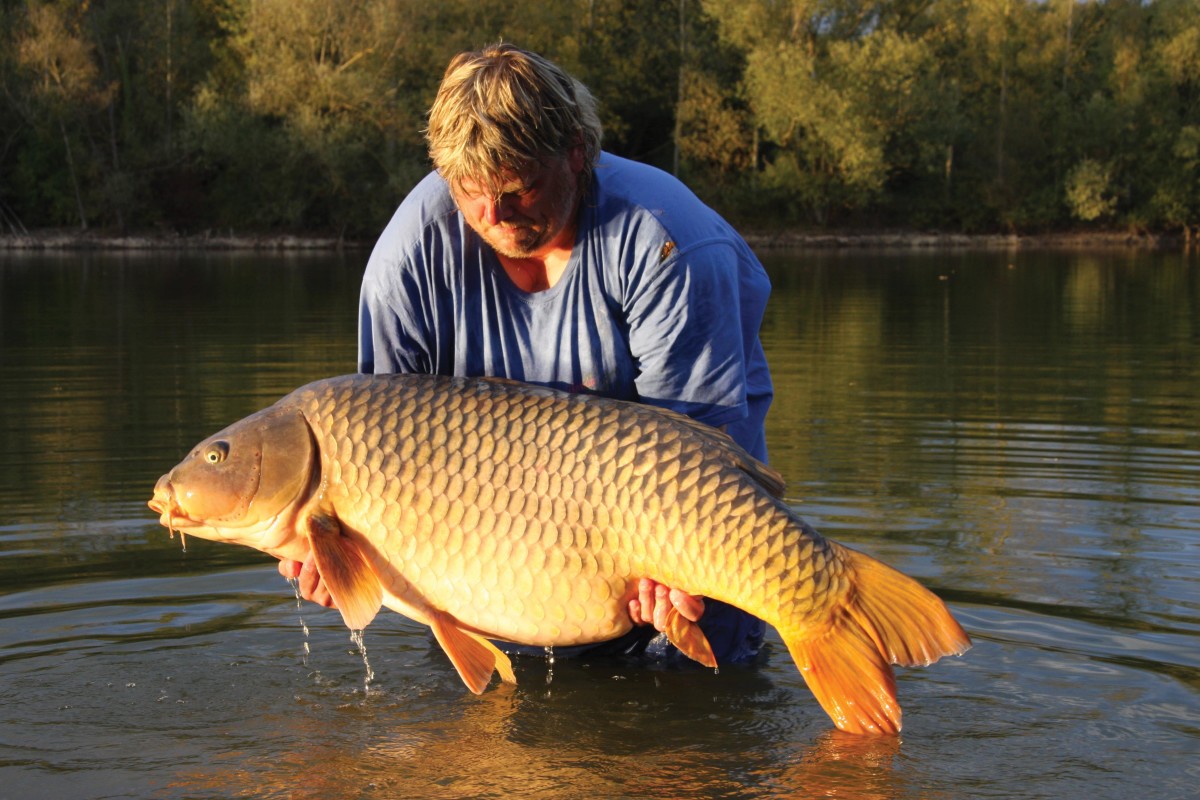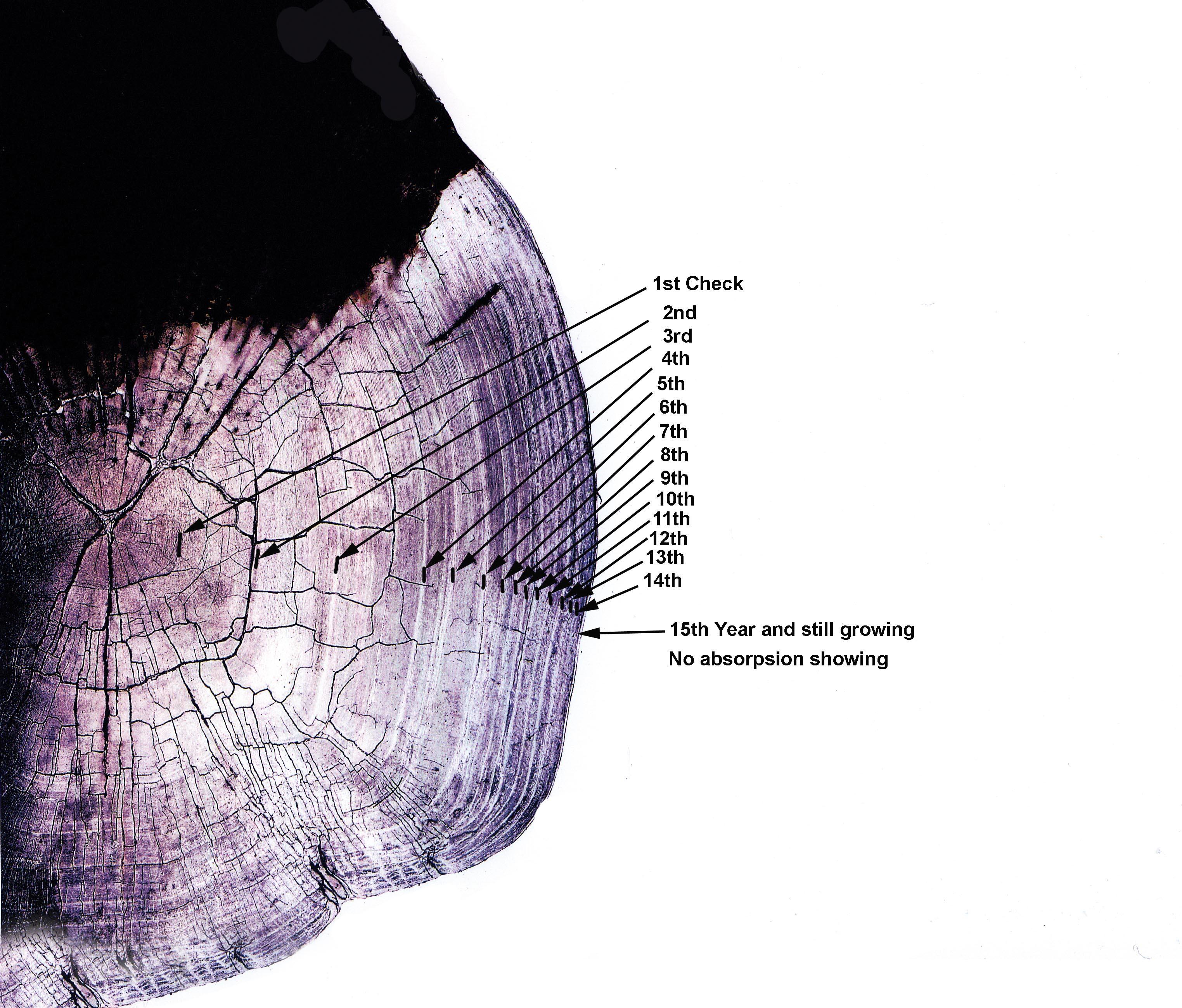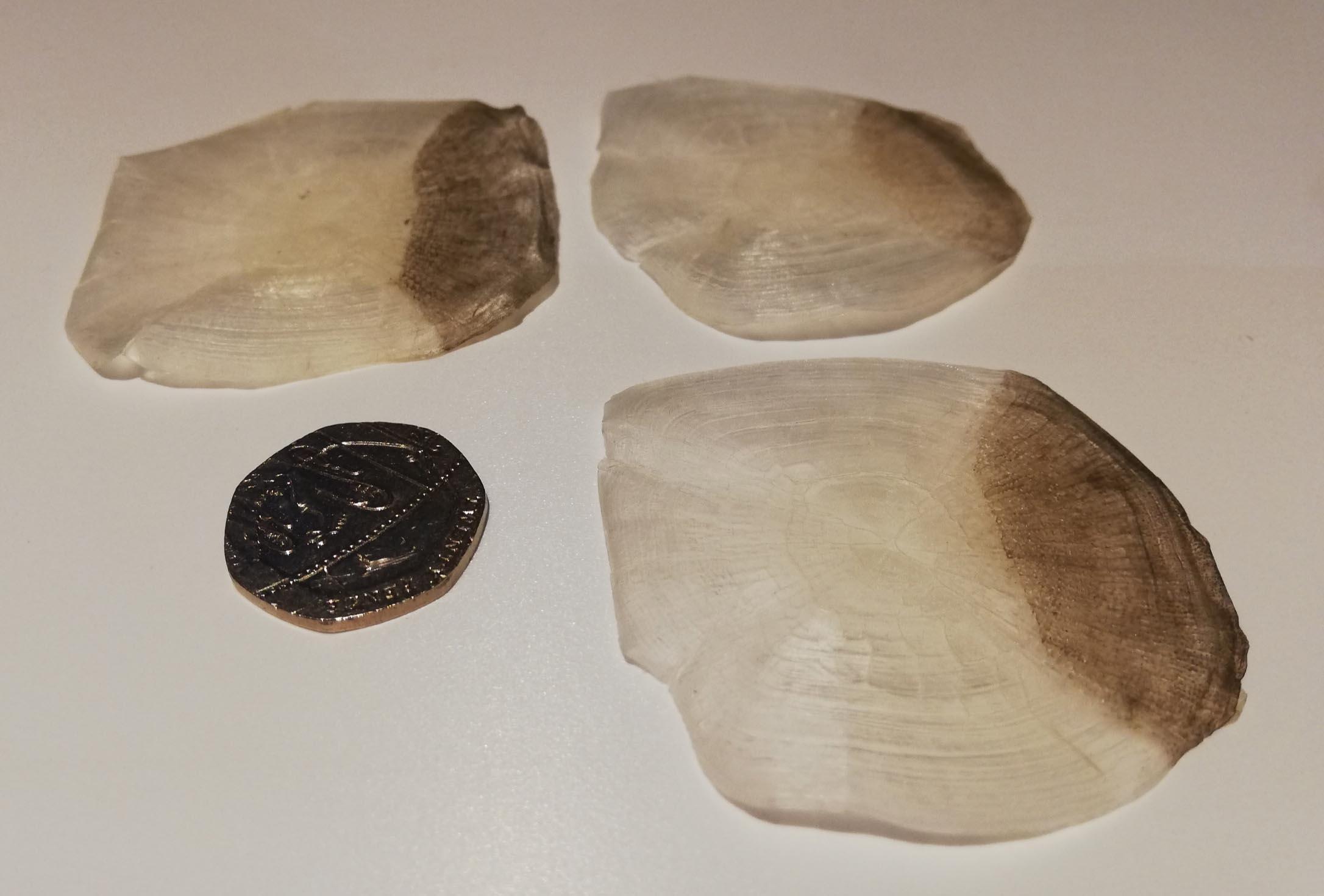
Examining the scale of the world record common carp
Back in 2013, George Sharman studied the scales of the previous world record common carp. The results are nothing sort of fascinating...
Back in 2013, author, lifetime carp angler and member of the BCSG, George Sharman, was asked by Bill Cottam, via his friend Colin McNeil, if he would look and study some of the scales he’d obtained from the previous world record common carp - the La Saussaie Carp - which topped over 100lbs. As we’re sure you’ll agree, the results and report were nothing short of fascinating…
GEORGE SHARMAN: A few weeks later, three large scales arrived by Special Delivery, two of which were suitable for reading the annual checks. The scales had been removed quite some time prior to me receiving them, and because of this, quite a number of cracks had occurred as the scales dried out. While this does not stop the scales being examined, it does tend to hide the odd check, because the cracks often follow the annual check around the scale. (Evidence of these phenomena can be seen at the end of the second year of growth, where a heavy crack runs halfway round the check line.)
The scale wasn’t very easy to read in its standard form, mainly due to the very close annual checks that occurred during the period it spent in Etang Saussaie. Bill gave me some background information about the fish: it was put into the lake about ten years ago when it weighed around 45lb. It has been caught numerous times over the years and most notably by Bill himself at 78lb 6oz in the autumn of 2009; by Clive Gibbins at a world record weight of 83lb 4oz in spring 2010; by Damian Clarke, again at a record weight of 88lb and length of 55-inches in autumn 2011; and finally by Colin Smith at the record weight of 100lb 8oz at a length of 57-inches in the spring of 2013.

As I understand it, the fish was caught several times in a short period in the spring of 2013 and it died soon after, probably due to the stress, or injury, for no matter how carefully fish of this size are handled, they are subject to the full effects of gravity on the bank, whereas the water provides them with an almost weightless ‘inner-space’ environment, with no excess pressure on any one part of the body.
The length of this fish at 57-inches is absolutely off the scale, and if it followed the average weight for length of normal carp, it ought to weigh something in the order of 168lb. In fact, its weight per inch is more like that of a good pike than a king carp. I have read that some anglers think it might weigh a lot more at a later stage of life, but I have reservations in this respect, that I will address later.
I took many photographs of the scales and manipulated and enhanced them to try to make the annual checks more pronounced. This resulted in the scale taking on a darker appearance and, while the annual checks were made more prominent, the manipulation also highlighted some of the, so-called, false checks. False checks only show on parts of the scale and don’t run all the way around it. They are probably caused by the stress of being caught, or could be due to environmental changes in the lake or severe weather conditions: I don’t think there is a satisfactory explanation for false checks.
Looking at the scale photograph, it can be seen that the fish made tremendous growth during the early years. From calculations, I suggest by five years it was 41-inch long and the sixth year 46-inch long, weighing approximately 50lb and 60lb respectively in top annual condition prior to spawning.

Returning to the scale in question, there is a marked decline in growth in the latter nine years and, in fact, I would predict, looking at the annual checks, that the fish was transferred to Etang Saussaie when it was six-years-old. However, seeing that I make the fish 15-years-old, it would mean it was transferred nine years ago and not ten as Bill was told. It is obvious there was a tremendous drop in growth after the first six or seven years. The explanations for this could be: a large change in water conditions in Etang Saussaie, such as chemically different; less food available of the type that gave the earlier growth; or it might be simply that the fish, becoming mature, started spawning. It would then be faced with losing a lot of body weight each year that had to be replaced before it was able to grow bigger.
I said many years ago that scale reading is more an art than a science, so the examination is only my reading of the evidence laid down in the scale; others might read it differently. It can be seen, though, that in the fifteenth year, there is no sign of an annual check. It suggests that the fish had not spawned before it died, but it also shows that it died in a relatively short period of time, before any absorption could occur, for if a carp is injured and not eating for some time, it will show absorption on the outer edge of the scale. I don’t think this carp, at the end of the normal growth period, would have weighed much more. It may possibly have become dropsied or ‘spawn-bound’ but then again, I feel that this fish may have been a male, and if that is the case, the second possibility isn’t possible!
GEORGE SHARMAN



